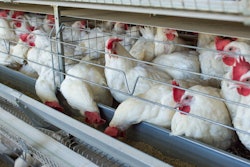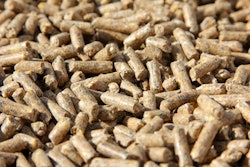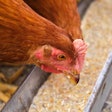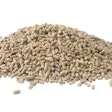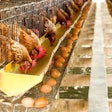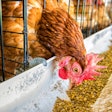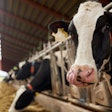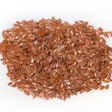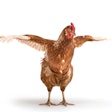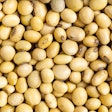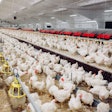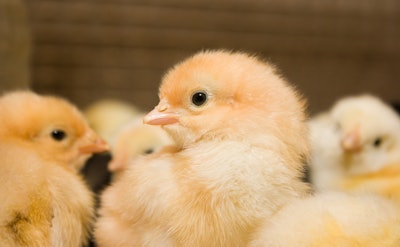
Delaying the first feed by even 24 hours can harm chick development and reduce their ability to absorb nutrients, explained University of Georgia Professor Todd Applegate at the 2025 Poultry Science Association Annual Meeting held in Raleigh, North Carolina.
Transportation from the hatchery to the farm often creates feeding delays for chicks. However, providing nutrients either before hatching through in-ovo feeding or immediately upon hatching could help improve bird intestinal health and production performance, Applegate said.
According to Applegate’s research, chicks fed immediately after hatching developed significantly more intestinal cells, compared to those waiting 24 hours for their first meal.
Birds that were fed immediately after hatch showed better nutrient transporter expression and increased protective goblet cells in their intestines through the first 10 days of life, compared to chicks that had a delayed feed.
Having more goblet cells is beneficial because it improves mucosal protection for the intestinal lining, which is especially important for chicks as their immune systems develop and they encounter new bacteria in their environment and feed.
Applegate continued, explaining that chick intestines undergo extreme transformation in their first days of life. Intestinal villi reach full maturity by day 10 post-hatch, while microvilli peak at day three. This rapid development creates a critical window where nutrition directly impacts long-term bird performance, he added.
In-ovo feeding could help support nutrient absorption
Injecting nutrients into the egg's amniotic fluid before hatching could also aid intestinal development in chicks. When embryos received the amino acid glutamine at day 17 of incubation, they showed improvements in intestinal development by day 19, according to Applegate.
Additionally, glutamine-supplemented embryos developed longer, more organized microvilli. The glutamine-supplemented chicks maintained better intestinal structure and enhanced expression of key nutrient transporters, compared to the control chicks, he said.



